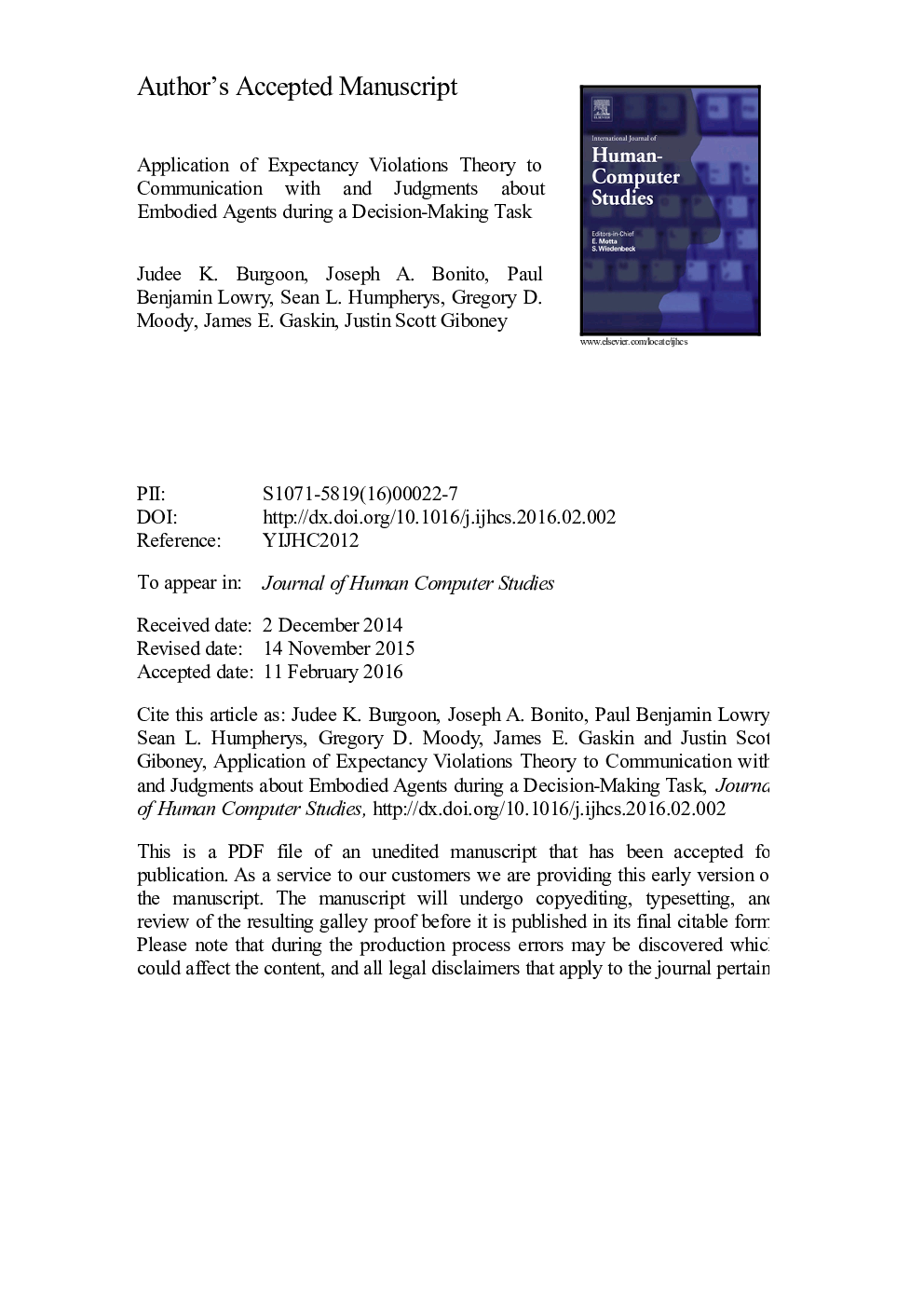| Article ID | Journal | Published Year | Pages | File Type |
|---|---|---|---|---|
| 6861037 | International Journal of Human-Computer Studies | 2016 | 43 Pages |
Abstract
Because users treat embodied agents (EAs) as social actors, users hold expectations about human-to-EA communication (HtEAC) similar to those in human-to-human communication. This study extends Expectancy Violations Theory (EVT) to examine how different forms of interfaces that confirm or violate user expectations affect the communication process, social judgments, ability to influence, and accuracy of recall associated with HtEAC. Positive violations of expectancy are acts or characteristics of the EA that are unexpected but evaluated favorably by the human partner. Results suggest that when the EA deviates from expectations, effects on the HtEAC process and related outcomes can be more pronounced. EAs evaluated as positive violations had more favorable effects on task attractiveness than other human or EA interaction partners. As predicted by EVT, EA interactions that were positively evaluated elicited more perceived connectedness, feelings of being understood/receptivity, and dependability than those EA interactions evaluated negatively. However, negative violations did not produce worse outcomes than negative confirmations. EVT offers a useful lens for examining the communication effects of HtEAC and points to benefits of creating EAs that evoke positive violations of expectancy.
Related Topics
Physical Sciences and Engineering
Computer Science
Artificial Intelligence
Authors
Judee K. Burgoon, Joseph A. Bonito, Paul Benjamin Lowry, Sean L. Humpherys, Gregory D. Moody, James E. Gaskin, Justin Scott Giboney,
